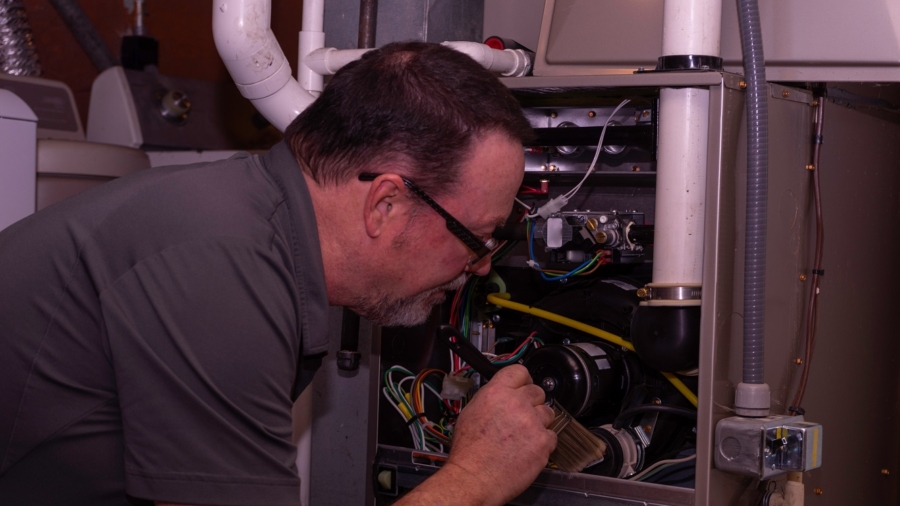Keeping your family safe and warm during the winter is a top priority. But did you know your furnace could be silently producing a deadly gas called carbon monoxide (CO)? Regular furnace inspections are essential in preventing carbon monoxide leaks and ensuring the safe operation of your heating system.
The Silent Threat: Carbon Monoxide
Carbon monoxide is an odorless, colorless gas produced by the incomplete combustion of fuels like natural gas, commonly used in furnaces. It’s dangerous because it replaces oxygen in the bloodstream, leading to CO poisoning. Symptoms can range from mild headaches and dizziness to nausea, vomiting, and even death.
Why Furnace Inspections Matter
Furnaces age and wear out over time. Cracked heat exchangers, faulty venting systems, or improper combustion can all lead to potential carbon monoxide leaks. An annual inspection by a qualified technician can identify these issues before they become a danger. Here’s what a professional inspection typically covers:
- Visual inspection: Technicians will look for signs of damage, corrosion, or rust on the furnace and flue pipes, checking for potential hazards related to CO leaks.
- Combustion testing: This test measures levels of carbon monoxide in the flue gases to ensure proper fuel burning within the combustion chamber.
- Ventilation system check: Technicians will inspect the flue system for blockages or leaks that could trap CO inside your home, hindering proper ventilation.
Preventative Measures Against Carbon Monoxide
In addition to regular inspections, here are some steps you can take to prevent the risk of carbon monoxide poisoning:
- Install carbon monoxide detectors: Place CO detectors on every level of your home, outside sleeping areas, and near fuel-burning appliances. Test your detectors monthly and replace them every 5-10 years.
- Schedule annual furnace maintenance: A yearly tune-up ensures your furnace operates efficiently and safely, minimizing the risk of carbon monoxide production.
- Maintain clean air filters: Regularly replace air filters according to the manufacturer’s instructions. Clogged air filters can restrict airflow and hinder proper combustion, potentially leading to CO leaks.
- Be aware of warning signs: If you notice any signs of a faulty furnace, such as a yellow pilot light, unusual odors, or excessive rust, contact a qualified technician immediately. These signs may indicate potential carbon monoxide leaks.
Don’t Wait Until It’s Too Late
Carbon monoxide poisoning is a serious threat, but it’s preventable. By taking proactive steps like scheduling regular furnace inspections, maintaining your CO detectors, and ensuring proper ventilation, you can significantly reduce the dangers of carbon monoxide in your home. Early detection through annual furnace inspections and proper maintenance can prevent CO from becoming the silent killer in your home, protecting your family from potential hazards like brain damage and loss of consciousness.
Call Christopher’s Heating & Air Today!
At Christopher’s Heating & Air, we prioritize your safety and comfort. Our certified technicians provide comprehensive furnace inspections and maintenance services to keep your heating system running smoothly and efficiently. We can also install and service carbon monoxide detectors to give you added peace of mind. Don’t wait until a cold snap arrives – contact us today to schedule your annual furnace inspection and ensure a safe and warm winter for your family.


